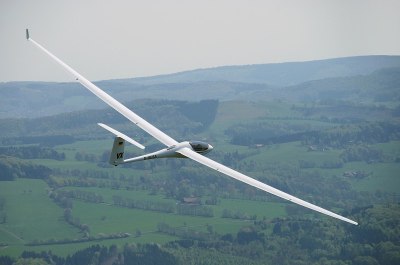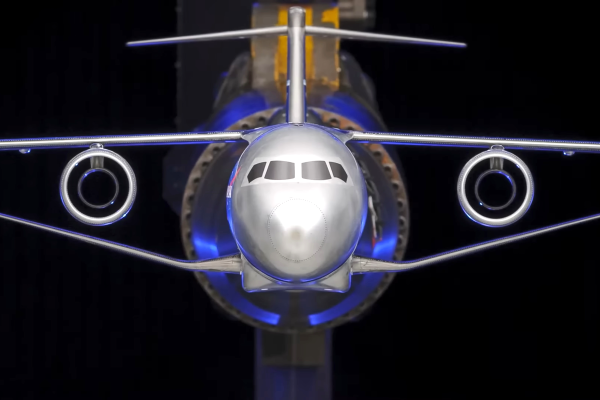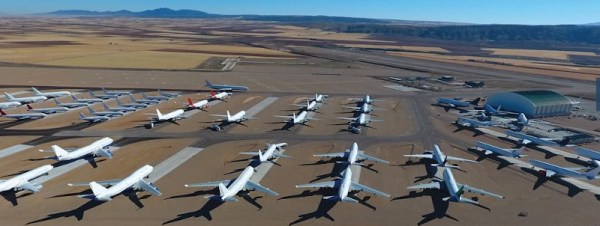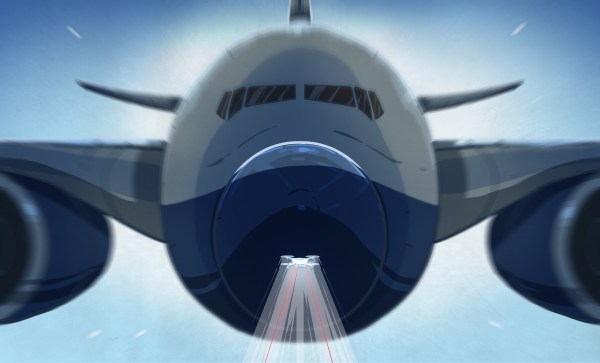When all else fails, blame it on the cloud? It seems like that’s the script for just about every outage that makes the news lately, like the Wyze camera outage this week that kept people from seeing feeds from their cameras for several hours. The outage went so far that some users’ cameras weren’t even showing up in the Wyze app, and there were even reports that some people were seeing thumbnails for cameras they don’t own. That’s troubling, of course, and Wyze seems to have taken action on that quickly by disabling a tab on the app that would potentially have let people tap into camera feeds they had no business seeing. Still, it looks like curiosity got the better of some users, with 1,500 tapping through when notified of motion events and seeing other people walking around inside unknown houses. The problem was resolved quickly, with blame laid on an “AWS partner” even though there were no known AWS issues at the time of the outage. We’ve said it before and we’ll say it again: security cameras, especially mission-critical ones, have no business being connected with anything but Ethernet or coax, and exposing them to the cloud is a really, really bad idea.
airline10 Articles
Ask Hackaday: Could Rating Airlines Stop Flights From Spreading Diseases?
A few weeks ago, I found myself the victim of flights from hell. My first flight was cancelled, leaving me driving home late at night, only to wake again for a red-eye the next morning. That was cancelled as well, with the second replacement delayed by a further hour. All in all I ended up spending a good ten hours extra in the airport surrounded by tired, sick, and coughing individuals, and ended up a full 16 hours late to my destination. On the return, I’d again tangle with delays, and by the weekend’s close, I’d contracted a nasty flu for my trouble.
All this had me riled up and looking for revenge. I had lost hours of my life to these frustrations, and the respiratory havoc claimed a further week of my working life. It had me realizing that we could surely improve the performance and hygiene of our airliners with a simple idea: a website called Flights From Hell.
Continue reading “Ask Hackaday: Could Rating Airlines Stop Flights From Spreading Diseases?”
Sharkskin Coating Reduces Airliner Fuel Use, Emissions
The aviation industry is always seeking advancements to improve efficiency and reduce carbon emissions. The former is due to the never-ending quest for profit, while the latter helps airlines maintain their social license to operate. Less cynically, more efficient technologies are better for the environment, too.
One of the latest innovations in this space is a new sharkskin-like film applied to airliners to help cut drag. Inspired by nature itself, it’s a surface treatment technology that mimics the unique characteristics of sharkskin to enhance aircraft efficiency. Even better, it’s already in commercial service! Continue reading “Sharkskin Coating Reduces Airliner Fuel Use, Emissions”
Truss-Braced Wings Could Bring New Look To Runways Worldwide
Airliners have looked largely the same for a long time now. The ongoing hunt for efficiency gains has seen the development of winglets, drag reducing films, and all manner of little aerodynamic tricks to save fuel, and hence money.
Boeing now has its eye on bigger, tastier goals. It believes by switching to a truss-braced wing design, it could net double-digit efficiency gains. It’s working together with NASA to see if this concept could change the face of commercial aviation in decades to come.
Aspect Ratio Matters

The key goal of using a truss-braced wing is to enable an airliner to use a wing much thinner and narrower than usual. These “high aspect ratio” wings are far more efficient than the stubbier, wider wings currently common on modern airliners. But why is aspect ratio so important, and how does it help
If you’ve ever looked at a glider, you will have noticed its incredibly long and narrow wings, which stand it apart from the shorter, wider wings used on airliners and conventional small aircraft. These wings are said to have a high aspect ratio, the ratio between the square of the wingspan and the projected area of the wing itself.
These wings are highly desirable for certain types of aircraft, as lift-to-drag ratio increases with aspect ratio. Any wing that generates lift also generates some drag, but this can be minimized through careful wing design. By making the wings longer and narrower, and thus higher in aspect ratio, the wing tip vortices generated by the wing are weakened. This reduces drag on the plane, and quite significantly so. Continue reading “Truss-Braced Wings Could Bring New Look To Runways Worldwide”
Airlines Seek Storage For Grounded Fleets Due To COVID-19
Ask any airline executive what their plans were back in January 2020, and you’d probably get the expected spiel about growing market share and improving returns for shareholders. Of course, the coronovirus pandemic quickly changed all that in the space of just a few months. Borders closed, and worldwide air travel ground to a halt.
Suddenly, the world’s airlines had thousands of planes and quite literally nowhere to go. Obviously, leaving the planes just sitting around in the open wouldn’t do them any good. So what exactly is involved in mothballing a modern airliner?
Continue reading “Airlines Seek Storage For Grounded Fleets Due To COVID-19”
If You See Anything, Say Something? Math On A Plane
Remember September 2016 2015? That was the month that [Ahmed Mohamed] brought a modified clock to school and was accused of being a terrorist. The event divided people with some feeling like it was ignorance on the part of the school, some felt the school had to be cautious, some felt it was racial profiling, and others thought it was a deliberate provocation from his possibly politically active parents. In the end, [Ahmed] moved to Qatar.
Regardless of the truth behind the affair, this month we’ve seen something that is probably even less ambiguous. The Washington Post reports that a woman told an Air Wisconsin crew that she was too ill to fly. In reality, she was sitting next to a suspicious man and her illness was a ruse to report him to the crew.
Authorities questioned the man. What was his suspicious activity? Was he assembling a bomb? Carrying a weapon? Murmuring plans for destruction into a cell phone? No, he was writing math equations. University of Pennsylvania economics professor [Guido Menzio] was on his way to deliver a speech and was reviewing some differential equations related to his work.
[Menzio] says he was treated well, and the flight was only delayed two hours (which sounds better in a blog post then it does when you are flying). However, this–to me–highlights a very troubling indicator of the general public’s level of education about… well… everything. It is all too easy to imagine any Hackaday reader looking at a schematic or a hex dump or source code could have the same experience.
Some media has tried to tie the event to [Menzio’s] appearance (he’s Italian) but I was frankly surprised that someone would be afraid of an equation. The pen may be mightier than the sword, but a math equation won’t (by itself) down an aircraft. I’ve heard speculation that the woman might have thought the equations were Arabic. First of all, what? And secondly, what if it were? If a person is writing in Arabic on an airplane, that shouldn’t be cause for alarm.
It sounds like the airline (which is owned by American Airlines) and officials acted pretty reasonably if you took the threat as credible. The real problem is that the woman–and apparently, the pilot–either didn’t recognize the writing as equations or somehow feared equations?
Regardless of your personal feelings about the clock incident, you could at least make the argument that the school had a duty to act with caution. If they missed a real bomb, they would be highly criticized for not taking a threat seriously. However, it is hard to imagine how symbols on a piece of paper could be dangerous.
While the mainstream media will continue to focus on what this means for passenger safety and racial profiling, I see it as a barometer of the general public’s perception of science, math, and technology as dark arts.
Debunking The Drone Versus Plane Hysteria
The mass media are funny in the way they deal with new technology. First it’s all “Wow, that’s Cool!”, then it’s “Ooh, that’s scary”, and finally it’s “BURN THE WITCH!”. Then a year or so later it’s part of normal life and they treat it as such. We’ve seen the same pattern repeated time and time again over the years.
![The mass media tech story cycle. Our apologies to Gartner. Curve image: Jeremykemp [ CC BY-SA 3.0 ], via Wikimedia Commons](https://hackaday.com/wp-content/uploads/2016/04/media-tech-cycle-800px1.png)
The latest piece of technology to feel the heat in this way is the multirotor. Popularly referred to as the drone, you will probably be most familiar with them as model-sized aircraft usually with four rotors. We have been fed a continuous stream of stories involving tales of near-misses between commercial aircraft and drones, and there is a subtext in the air that Something Must Be Done.
The catalyst for this piece is the recent story of a collision with a British Airways plane 1700ft over West London approaching London Heathrow. The ever-hyperbolic Daily Mail sets the tabloid tone for the story as a drone strike, while the BBC’s coverage is more measured and holds a handy list of links to near-miss reports from other recent incidents. This incident is notable in particular because a Government minister announced that it is now believed to have been caused by a plastic bag, and since there is already appropriate legislation there was little need for more. A rare piece of sense on a drone story from a politician. The multirotor community is awash with plastic bag jokes but this important twist did not seem to receive the same level of media attention as the original collision.
Are multirotors unfairly being given bad press? It certainly seems that way as the common thread among all the stories is a complete and utter lack of proof. But before we rush to their defence it’s worth taking a look at the recent stories and examining their credibility. After all if there really are a set of irresponsible owners flying into commercial aircraft then they should rightly be bought to book and it would do us no favours to defend them. So let’s examine each of those incident reports from that BBC story.
Continue reading “Debunking The Drone Versus Plane Hysteria”

















